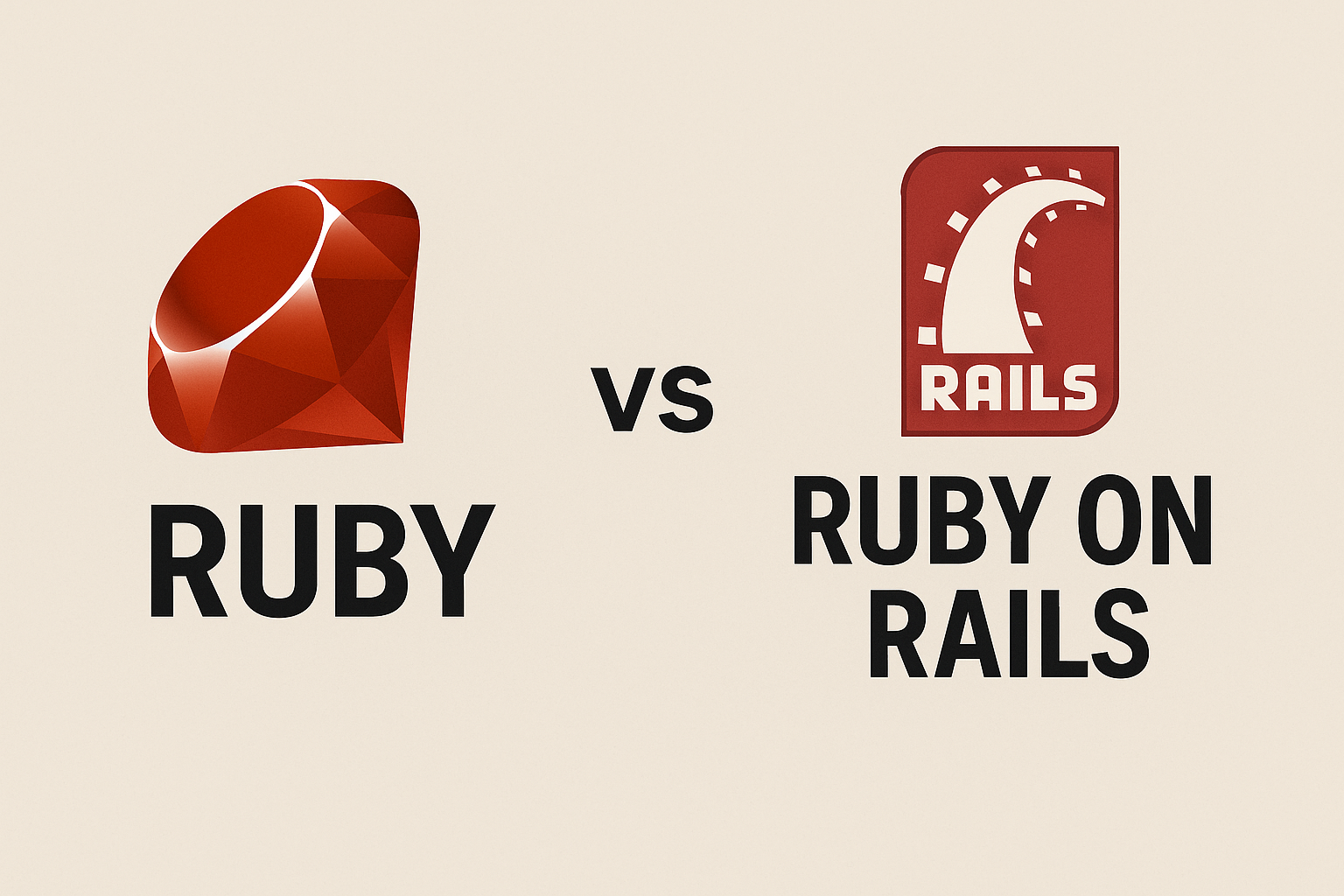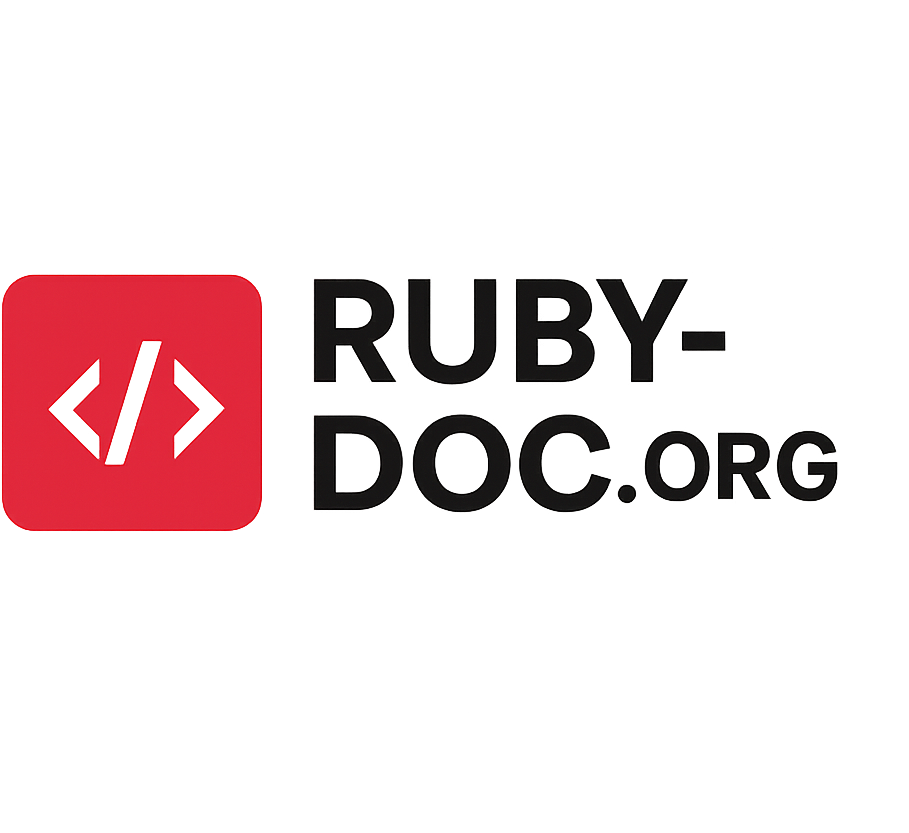
In the world of web development, Ruby and Ruby on Rails are two terms that are often used interchangeably. However, they refer to very different things. Understanding the difference between Ruby vs Ruby on Rails is essential for developers, businesses, and tech enthusiasts looking to build scalable and efficient applications.
This article dives deep into both technologies—what they are, how they relate, their use cases, advantages, and limitations. By the end, you’ll have a clear understanding of when to use Ruby and when to leverage Ruby on Rails.
What Is Ruby?
Ruby is a dynamic, open-source programming language created by Yukihiro “Matz” Matsumoto in the mid-1990s. Designed for developer happiness and productivity, Ruby features a clean, elegant syntax that is easy to read and write.
Key Characteristics of Ruby:
- Object-Oriented: Everything in Ruby is an object, including primitive data types.
- Dynamic Typing: Variable types are determined at runtime.
- Garbage Collected: Ruby handles memory management automatically.
- Mixins Instead of Multiple Inheritance: Modules allow developers to share functionality across classes.
- Interpreted Language: Ruby code runs through an interpreter, not a compiler.
Use Cases for Ruby:
- Prototyping and MVPs: Ruby’s flexibility makes it ideal for rapid development.
- Scripting and Automation: System scripts and automation tasks.
- Command-line Tools: Useful for building CLI applications.
- Custom Business Logic: Ruby’s flexibility supports complex algorithmic implementations.
What Is Ruby on Rails?
Ruby on Rails (often just “Rails”) is a web application framework written in Ruby. Created by David Heinemeier Hansson in 2004, Rails follows the Model-View-Controller (MVC) architecture and is designed to make building web applications easier and faster.
Key Features of Ruby on Rails:
- Convention over Configuration: Developers don’t need to write configuration files to set up conventions.
- Don’t Repeat Yourself (DRY): Encourages code reuse and modularity.
- Built-in ORM (ActiveRecord): Simplifies database interactions.
- Scaffolding: Automatically generates some of the code for basic CRUD operations.
- Integrated Testing: Comes with testing frameworks for unit, functional, and integration tests.
Use Cases for Ruby on Rails:
- Full-stack Web Applications
- Content Management Systems (CMS)
- E-commerce Platforms
- SaaS Applications
- API Development
Ruby vs Ruby on Rails: Core Differences
Although closely related, Ruby and Ruby on Rails are not the same. Here’s a breakdown of their key differences:
| Feature | Ruby | Ruby on Rails |
|---|---|---|
| Definition | Programming language | Web application framework |
| Purpose | General-purpose development | Web development only |
| Flexibility | Highly flexible | More opinionated |
| Learning Curve | Steeper for complete beginners | Easier once you know Ruby |
| Speed of Development | Slower for building web apps | Fast and efficient |
| Tooling | Lightweight | Includes many built-in tools |
| Performance | Depends on developer’s design | Optimized for typical web patterns |
| Community | Smaller than Rails | Large and active |
The Relationship Between Ruby and Rails
To put it simply, Ruby is the language, and Rails is the framework built in Ruby.
You cannot run a Rails application without Ruby, but you can write Ruby code without ever using Rails. Think of Ruby as the engine and Rails as the car body built around it. You can use the engine alone (Ruby) to power various machines, or combine it with Rails to build a robust, full-featured car (web app).
Benefits of Using Ruby
1. Readable and Intuitive Syntax
Ruby’s syntax resembles natural English, making it one of the most beginner-friendly programming languages.
2. Developer Productivity
Because of its concise syntax and dynamic nature, Ruby allows developers to write fewer lines of code to achieve the same functionality.
3. Large Ecosystem
RubyGems, the package manager for Ruby, contains thousands of libraries (gems) that extend its functionality.
4. Active Community
Though not as large as some other languages, Ruby’s community is vibrant and helpful, with frequent updates and contributions.
Benefits of Using Ruby on Rails
1. Rapid Development
Rails provides scaffolding and generators, enabling developers to create complex applications much faster.
2. MVC Architecture
Rails organizes code into Models, Views, and Controllers, improving maintainability and scalability.
3. Security Features
Rails has built-in protection against common web vulnerabilities such as SQL injection, CSRF, and XSS.
4. Ecosystem and Plugins
The Rails ecosystem is rich with gems that extend functionality for authentication, payments, background jobs, and more.
5. Emphasis on Best Practices
Rails promotes clean code, RESTful routing, and test-driven development, leading to better long-term maintainability.
Limitations of Ruby
1. Performance
Ruby is slower than compiled languages like C++ or Go. This can become an issue for CPU-intensive applications.
2. Memory Usage
Ruby applications may consume more memory compared to those written in more lightweight languages.
3. Not Ideal for Mobile or Desktop Apps
While it’s possible to build GUI apps with Ruby, it’s not commonly done and is better suited to backend tasks.
Limitations of Ruby on Rails
1. Learning Curve for Beginners
Although Rails simplifies web development, beginners might find it overwhelming due to the number of conventions and the “magic” happening behind the scenes, according to computer.org.
2. Performance Bottlenecks
Large Rails apps may suffer from performance issues without proper optimization.
3. Hosting and Deployment
While platforms like Heroku have simplified Rails deployment, configuring and scaling Rails applications can be complex compared to more modern stacks (source).
Ruby vs Ruby on Rails: Real-World Examples
Ruby in Action:
- Homebrew: A package manager for macOS written in Ruby.
- CocoaPods: A dependency manager for iOS projects written in Ruby.
- Chef: A configuration management tool written in Ruby.
Ruby on Rails in Action:
- GitHub: Initially built on Rails before moving parts to Go for performance.
- Shopify: E-commerce platform that relies heavily on Rails.
- Basecamp: The original Rails application.
- Hulu and Airbnb: Rails was used in early stages of development.
When Should You Use Ruby Without Rails?
You might choose to use Ruby alone in the following scenarios:
- You’re building scripts for automation or system tasks.
- You’re developing a command-line interface (CLI) tool.
- You need to write custom business logic that doesn’t require a web framework.
- You’re creating a data processing pipeline.
Ruby excels in situations that require flexibility and rapid prototyping outside the web environment.
When Should You Use Ruby on Rails?
Ruby on Rails is the better choice if:
- You’re building a full-featured web application with database support.
- You need rapid development with minimal configuration.
- You want to follow best practices out-of-the-box.
- You’re building an MVP for a startup.
- Your app needs RESTful APIs, user authentication, or admin dashboards.
Rails gives developers the power to focus on business logic rather than setting up the plumbing.
Ruby vs Ruby on Rails: Hiring and Job Market
The demand for Ruby on Rails developers is higher than for Ruby developers alone, primarily because most companies using Ruby are doing so through Rails.
Trends in the Job Market:
- Ruby: More niche roles in DevOps or scripting.
- Rails: Web development roles in startups, SaaS platforms, and e-commerce.
Rails developers often command higher salaries due to the comprehensive nature of the framework and its applicability in business-critical applications.
Ruby vs Ruby on Rails in 2025 and Beyond
While newer frameworks and languages have taken the spotlight, Ruby and Rails continue to evolve. Ruby 3.2 and Rails 7 introduced features like better concurrency and Hotwire for faster front-end experiences.
What to expect in the near future:
- Improved performance through Just-In-Time (JIT) compilation.
- Greater focus on developer tooling and error debugging.
- More adoption of Rails for API-only backends coupled with React or Vue front-ends.
- Continued use in niche enterprise and startup environments due to its speed of development.
Which Should You Learn First?
If you’re new to the Ruby ecosystem:
- Start with Ruby to understand the syntax, data structures, and core principles.
- Once comfortable, move on to Rails to apply your knowledge in building real-world web applications.
Think of Ruby as the foundation and Rails as the architecture built upon it.
Summary: Ruby vs Ruby on Rails
| Aspect | Ruby | Ruby on Rails |
|---|---|---|
| Type | Language | Framework |
| Use Case | Scripting, automation, CLI tools | Web application development |
| Ease of Use | Easy syntax, but general-purpose | Easy for web apps with conventions |
| Speed of Development | Slower for web apps | Very fast |
| Community Support | Moderate | Large and active |
| Learning Path | Ideal first step | Learn after mastering Ruby |
Final Thoughts
The debate of Ruby vs Ruby on Rails is not about which one is better, but about which one is more appropriate for your goals. Ruby is the versatile language, while Rails is the powerful web framework that brings that language to life in web development.
If you’re building a web application, Rails will likely be your go-to. If you’re looking to write scripts, automate tasks, or build tools, plain Ruby will serve you well.
Together, Ruby and Ruby on Rails offer a cohesive ecosystem that prioritizes developer happiness, rapid prototyping, and clean code architecture—attributes that have stood the test of time in the ever-changing tech world.
Also, check out our Ruby vs Python guide too!
